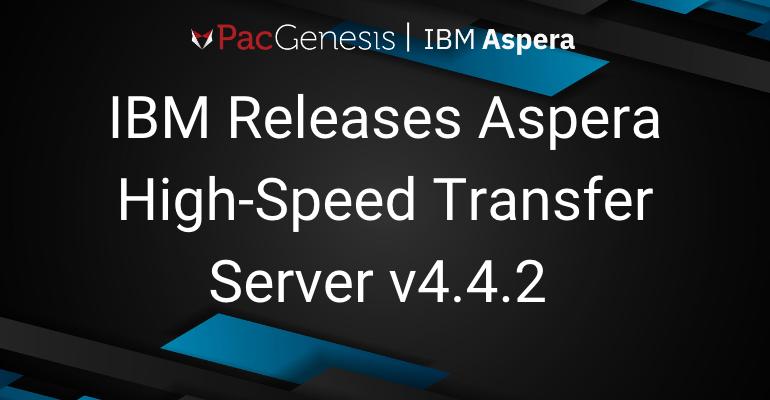IBM Releases Aspera High-Speed Transfer Server v4.4.2

IBM Releases Aspera High-Speed Transfer Server v4.4.2
Introduction
Recently, IBM released an update to High-Speed Transfer Server (HSTS), High-Speed Transfer Endpoint (HSTE), and Desktop Client v4.4.2. As you know, HSTS, HSTE and Desktop Client are the core client and server applications that enable high-performance, secure file transfers between locations around the globe, both on-premises and in the cloud.
This recent update, which is available now, includes many fixes, security updates, and feature improvements.
What’s new in HSTS, HSTE and Desktop Client v4.4.2?
Here are a few highlights:
- New operating system support for RHEL 9, Rocky Linux 8 and 9, and Amazon Linux 2 and 2023. CentOS is no longer listed as a supported operating system.
- Several open issues in async have been fixed, including:
- Directory permissions not always being preserved
- ‘Disconnected from peer’ errors in Console
- Stale lock files not being cleaned up
- Dedup errors
- Windows filesystem ACL issues when running with compression
- Several open issues in ascp have been fixed, including:
- Bearer tokens not validating when starting transfers via a Websocket channel
- Symlinks might cause transfer failures in multi-session mode
- May not be able to resume a previously partially uploaded file to Azure
- Transfers to S3 might not work when using an access point alias for the bucket
- Using the –delete-before-transfer option might result in unexpected paths that are removed from the destination when source paths are specified through a –file-list
- The default for _transfer_in_bandwidth_flow_min_rate_cap and _transfer_out_bandwidth_flow_min_rate_cap has changed from Unlimited to 0 to prevent setting a minimum rate that conflicts with the vlink configured rate.
- The –log-io parameter for asperanoded has been removed. This was previously used in rare circumstances when running asperanoded in a manual debug mode.
IBM has also indicated that using basic tokens generated from node user credentials to authorize transfers is deprecated and will be removed in a future release.
Aspera High-Speed Transfer Server, High-Speed Transfer Endpoint and Desktop Client Update Link and Release Notes
Use this link http://pacgenesis.com/download to access the latest installers, and this link https://www.ibm.com/docs/en/ahts/4.4?topic=rn-release-notes-aspera-high-speed-transfer-server-high-speed-transfer-endpoint-desktop-client-442 for the full Release Notes.
Should You Upgrade to HSTS, HSTE or Desktop Client v4.4.2?
While the new versions offer many benefits, as Aspera experts we also know that such updates require research and coordination. We’re happy to help with this process.




